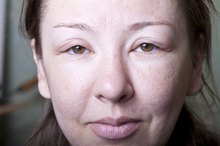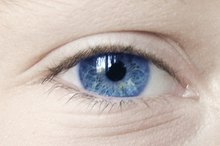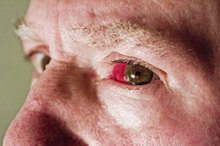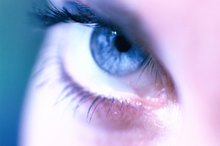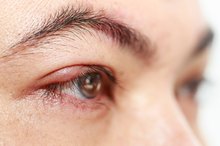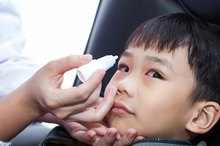Side Effects of Numbing Eye Drops
During an eye exam, the doctor may use a drop that numbs the surface of the eye. These drops may help the doctor check the eye pressure, or the numbing drops may ease pain and discomfort from foreign bodies, allowing the doctor to carefully examine the eye. However, people going for eye exams should know that, like any medication, numbing eye drops might cause minor, or serious, side effects.
If you are experiencing serious medical symptoms, seek emergency treatment immediately.
Irritation
Numbing eye drops may cause a stinging sensation when a drop hits the eye. In most people, this eases after a few seconds. Some people may have a sensitivity to the numbing agent, and, though the surface of the eye will remain numb for a short time, the eye will appear red and inflamed. When the numbness wears off, the eye may ache or itch and the person should notify the eye doctor immediately, says MayoClinic.com. If a person knows she has an allergy to novocaine or other numbing agents, she should discuss this with the eye doctor at the beginning of the eye exam.
- Numbing eye drops may cause a stinging sensation when a drop hits the eye.
- If a person knows she has an allergy to novocaine or other numbing agents, she should discuss this with the eye doctor at the beginning of the eye exam.
Healing
Inflamed Eye Membrane Causes
Learn More
Some doctor’s offices leave drops on a counter or in an accessible drawer, and when a patient comes in with a painful condition, the doctor may place a numbing drop on the eye’s surface to ease discomfort during the examination. For some people, the relief from the numbing drop makes them want to continue using the drop at home. Some eye doctors may prescribe the numbing drops after an injury, says the Department of Ophthalmology and Visual Sciences at the University of Illinois at Chicago 1. However, the patient should discuss this drop use with the doctor since frequent or constant use of the numbing agent will prevent the eye from healing.
- Some doctor’s offices leave drops on a counter or in an accessible drawer, and when a patient comes in with a painful condition, the doctor may place a numbing drop on the eye’s surface to ease discomfort during the examination.
Surface Damage
Simple use in a doctor’s office will not necessarily cause permanent damage to the eye’s surface. However, the person should not touch or rub the eye after the numbing drops. A numb eye cannot feel pressure or pain, and, under these circumstances, a person may easily scratch or injure the eye. Frequent use of numbing eye drops may also cause damage to the cornea, the front, clear part of the eye. Drop use may cause a corneal infection or corneal scarring, says The Foundation of the American Academy of Ophthalmology. If the cornea scars, vision will be permanently affected.
- Simple use in a doctor’s office will not necessarily cause permanent damage to the eye’s surface.
- A numb eye cannot feel pressure or pain, and, under these circumstances, a person may easily scratch or injure the eye.
Systemic Effects
Melatonin & Shimmering Eye Sensations
Learn More
An eye drop placed in the eye will eventually drain through the tear ducts and down the throat and into the stomach. As a result, the body absorbs the eye drop, which may cause effects throughout the body. People who have a reaction to the numbing drops may experience dizziness, irregular heartbeat, shortness of breath or weakness, says MayoClinic.com. Reactions may occur in the doctor’s office or later in the day as the drop moves through the body. A person who experiences any of these symptoms after the use of an eye numbing drop should inform her eye doctor immediately.
- An eye drop placed in the eye will eventually drain through the tear ducts and down the throat and into the stomach.
- A person who experiences any of these symptoms after the use of an eye numbing drop should inform her eye doctor immediately.
Related Articles
References
Writer Bio
Kate Beck started writing for online publications in 2005. She worked as a certified ophthalmic technician for 10 years before returning to school to earn a Masters of Fine Arts degree in writing. Beck is currently putting the finishing touches on a novel.
